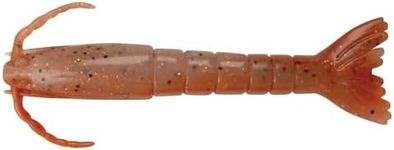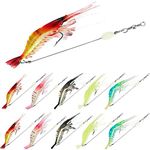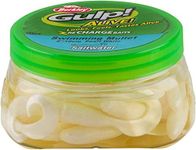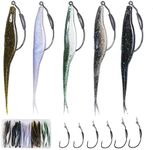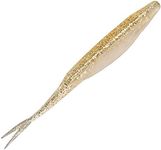Buying Guide for the Best Saltwater Fishing Lures
Choosing the right saltwater fishing lure can significantly enhance your fishing experience and increase your chances of a successful catch. The key to selecting the best lure is understanding the different specifications and how they align with your fishing needs. Here are some important factors to consider when picking a saltwater fishing lure.Lure TypeLure type refers to the design and function of the lure, which can include jigs, spoons, plugs, soft plastics, and topwater lures. Each type is designed to mimic different prey and attract specific types of fish. For example, jigs are versatile and can be used in various conditions, while topwater lures are great for surface-feeding fish. Choose a lure type based on the fish species you are targeting and the fishing conditions.
Lure SizeLure size is important because it should match the size of the prey that the target fish are feeding on. Larger lures are suitable for bigger fish, while smaller lures are better for smaller fish. If you are targeting a specific species, research the typical prey size for that fish and select a lure that closely matches it.
Lure ColorLure color can affect the lure's visibility and attractiveness to fish. Bright colors are more visible in murky water, while natural colors work well in clear water. Additionally, some colors are more effective in certain lighting conditions. For example, silver and white are good for sunny days, while darker colors are better for overcast conditions. Consider the water clarity and lighting when choosing the color of your lure.
Lure ActionLure action refers to the movement of the lure in the water, which can be influenced by its design and how it is retrieved. Some lures have a wobbling action, while others may dart or flutter. The action should mimic the movement of the prey fish to attract the target species. Experiment with different actions to see which one is most effective for the fish you are trying to catch.
Lure DepthLure depth is the depth at which the lure is designed to be fished. Some lures are meant to be used on the surface, while others are designed to sink to various depths. The depth you choose should be based on where the target fish are feeding. Surface lures are great for fish that feed near the top, while deeper lures are better for fish that stay closer to the bottom.
Lure MaterialLure material can affect the durability and action of the lure. Common materials include plastic, metal, and wood. Plastic lures are versatile and can be designed to mimic various prey, while metal lures are durable and good for deep-water fishing. Wood lures often have a natural action that can be very effective. Consider the fishing conditions and the type of fish you are targeting when choosing the material of your lure.



